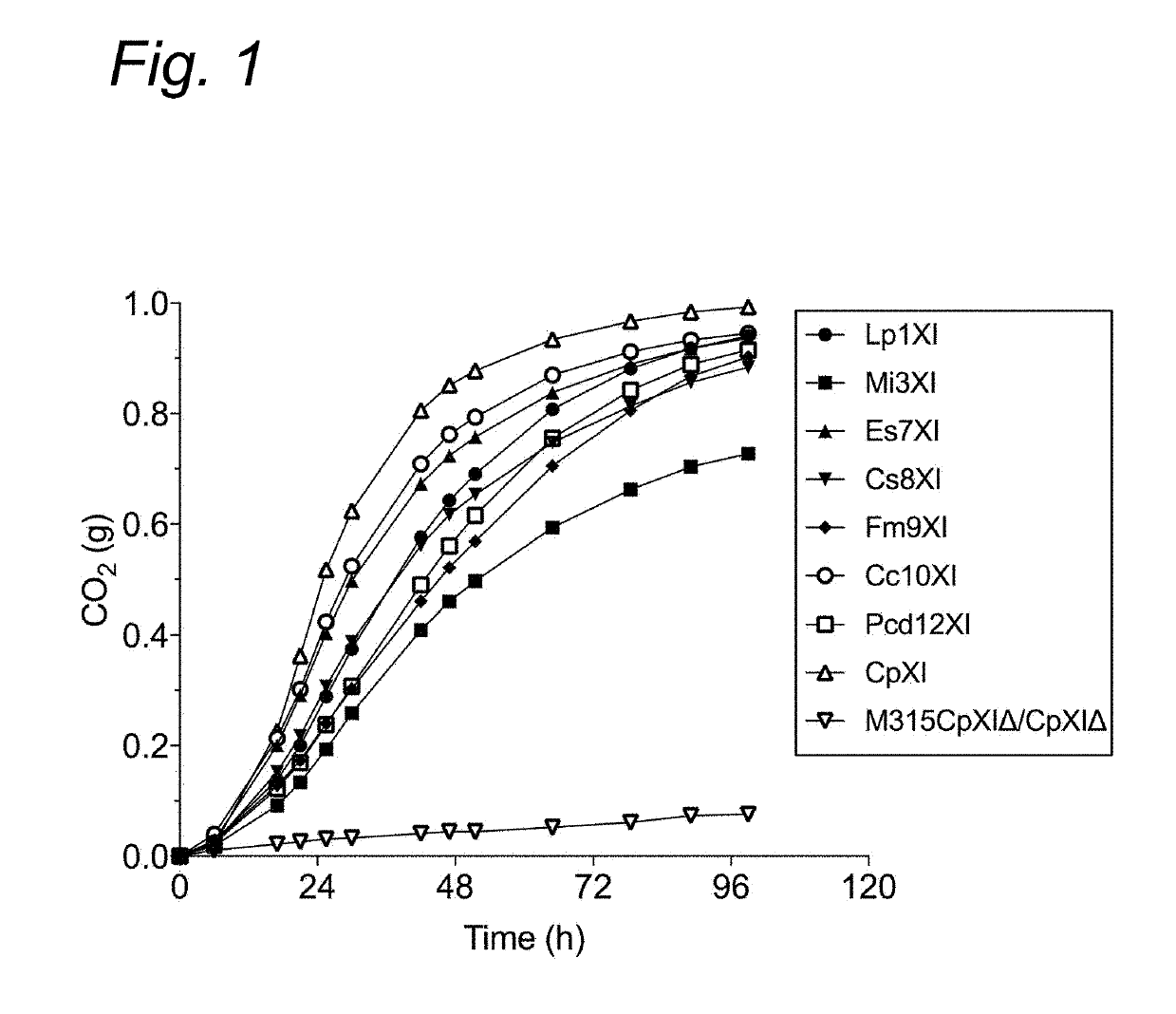Xylose Isomerases that confer efficient xylose fermentation capability to yeast
a technology of xylose and isomerase, applied in the field of microbiology and fermentation technology, can solve the problems of insufficient inherent robustness of organisms to cope with harsh environments, and the natural strains of i>s. cerevisiae /i>are not useful in the lignocellulose based ethanol industry,
- Summary
- Abstract
- Description
- Claims
- Application Information
AI Technical Summary
Benefits of technology
Problems solved by technology
Method used
Image
Examples
example 1
Introduction
[0106]In spite of the vast sequence information on xylose isomerases in public sequence databases, only few have been functionally expressed in yeast. One bottleneck might be due to differences in protein synthesis regulation mechanisms between prokaryotes and eukaryotes. The synthesis of bacterial proteins in yeast might not be properly regulated, which could be the reason for the frequent occurrence of inactive or insoluble proteins. Studies showed that proper expression of a gene does not necessarily correlate with proper enzymatic activity (13). In most XylA expressing strains, high enzymatic activity of XI and proper xylose fermentation capacity was observed only after further evolutionary adaptation of the host yeast strain, indicating that there are other regulatory mechanisms required for the proper functioning of the XI enzymes and for their proper connection with the other enzymes of the yeast fermentation pathway (11,12). Although the regulatory mechanisms are...
example 2
Performance of Es7XI and Cc10XI in Strain MDS130
[0127]We further improved the strain GSE16-T18 for improved xylose fermentation and inhibitor tolerance by genome shuffling and evolutionary adaption. Strain MDS130 has thus been selected showing highly improved xylose fermentation capacity in inhibitor-rich hydrolysates. Afterwards, we completely knocked out the CpXI genes from the genome of MDS130 using the CRISPR / Cas9 technique as described above in the section “deletion of CpXI from GSE16-T18”. As expected, the knockout strain MDS130CpXIΔ / CpXIΔ was not able to utilize xylose (FIG. 5A).
[0128]Next, we introduced the two best performing novel XI genes Es7XI and Cc10XI into the genome of MDS130CpXIΔ / CpXIΔ downstream of TYE7 gene in chromosome XV. With only two copies of each gene introduced, the deletion strain was able to utilized xylose but at a slower rate compared to the original MDS130 strain that carried about 18 copies of CpXI. In order to evaluate if combining the two genes imp...
PUM
| Property | Measurement | Unit |
|---|---|---|
| pH | aaaaa | aaaaa |
| ionic strength | aaaaa | aaaaa |
| temperature | aaaaa | aaaaa |
Abstract
Description
Claims
Application Information
 Login to View More
Login to View More - R&D
- Intellectual Property
- Life Sciences
- Materials
- Tech Scout
- Unparalleled Data Quality
- Higher Quality Content
- 60% Fewer Hallucinations
Browse by: Latest US Patents, China's latest patents, Technical Efficacy Thesaurus, Application Domain, Technology Topic, Popular Technical Reports.
© 2025 PatSnap. All rights reserved.Legal|Privacy policy|Modern Slavery Act Transparency Statement|Sitemap|About US| Contact US: help@patsnap.com



